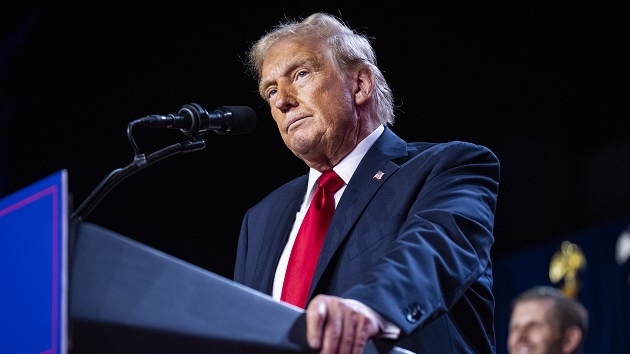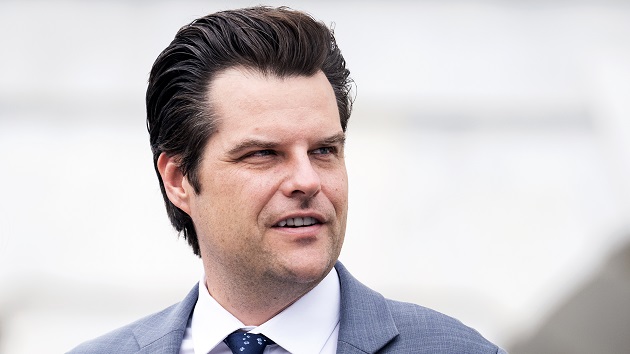988 Suicide and Crisis Lifeline expands capacity, access in 6 months since launch
Written by ABC Audio All Rights Reserved on February 11, 2023

(WASHINGTON) — In the six months since the launch of the national, government-backed 988 Suicide and Crisis Lifeline, contact and answer rates have risen dramatically, while the average speed to answer has dropped, according to Substance Abuse and Mental Health Services Administration data.
“As we expected, there’s been a significant increase in the use of the 988 Suicide and Crisis Lifeline service since this transition to a three-digit number,” April Naturale, interim executive director of the Suicide and Crisis Lifeline, told ABC News. “And actually, we’re really grateful that more people are contacting the line with this change. That was the whole goal.”
In December, 87% of calls, 96% of chats and 99% of texts were answered across the nation, according to SAMHSA — a 91% overall answer rate. In December 2021, under the previous, 10-digit lifeline, 81% of calls, 24% of chats and 52% of texts were answered, for a total answer rate of 64%.
The increase in answer rates nationwide comes amid a sharp increase in contacts since the launch of 988, the federal agency said.
SAMHSA data shows that 371,655 people contacted the lifeline in December, compared to 260,095 in December 2021.
In that same one-year period, the average speed to answer across all contacts dropped from 172 seconds (roughly three minutes) to 44 seconds.
“Both [contacts and answer rates] have increased at the same time because we were able to increase our capacity to answer more calls more quickly,” Naturale said.
988 launched on July 16, 2022, and marked a transition from the previous National Suicide Prevention Lifeline’s number. That service originated in 2005 and, advocates say, struggled to get adequate funding and staffing since its inception.
Ahead of the transition to the new, shorter number, advocates and stakeholders told ABC News about widespread concern that the anticipated influx of calls would be too much for the service to bear.
“There was a very short window from when [the law creating 988] passed in 2020 to the go-live date in 2022. And I had a few sleepless nights myself about what this would look like, but I’m really encouraged and excited by the data that we’re seeing,” said Hannah Wesolowski, chief advocacy officer for the National Alliance on Mental Illness (NAMI).
“There was a lot of work being done to build up that capacity, and clearly it made all the difference,” Wesolowski said.
The Fiscal Year 2023 Omnibus Appropriations Bill, passed in January, included $506.1 million to support and expand services provided by the lifeline. Combined with the $432 million previously allocated to shore up capacity ahead of the 988 launch, the Biden administration has invested almost $1 billion in the service.
“We know that many people across the country are struggling with mental health or substance use related crises,” said Dr. Miriam Delphin-Rittmon, the head of SAMHSA and the Department of Health and Human Services assistant secretary for mental health and substance use. “The 988 Suicide and Crisis Lifeline is a life-saving service and I am encouraged to see that more and more people are reaching out and getting connected to the support and care they need and getting connected more quickly than ever before.”
How money has helped response rates
Naturale, the 988 interim executive director, told ABC News that the federal funding leading up to the launch of the Suicide and Crisis Lifeline assisted in efforts to expand chat and text services so that more centers could answer those contacts more quickly.
“One of the things we wanted to really focus on with the addition of the 988 funding was being able to expand our chat and text offering. [That] really helps us to reach more people who wouldn’t normally pick up the phone,” Naturale explained. “We think we’re reaching a much more expanded audience, and the new funding allows us to continue working on this expanded list of centers so our answer rates and our capacity are both strong.”
The emphasis on chat and text comes amid concerns for the mental health of American youth.
Last month, SAMHSA released its 2021 National Survey on Drug Use and Health, which showed that 20.1% of adolescents aged 12 to 17 experienced a major depressive episode during 2021.
“As more youth started to use text and then chat [to 988], we felt the need to pay attention to those modalities,” Naturale said. “Even though calls remain high, we still get a significant number of contacts or calls, there has been a significant increase in overall utilization across the country of chat and text as communication modality. So, we needed to meet that challenge.”
New services offered
988 is also offering new services six months out from its initial launch. After an initial $7.2 million investment from SAMHSA, the lifeline subcontracted with The Trevor Project, a nonprofit organization focused on suicide prevention for LGBTQ youth, as the primary service provider for an LGBTQ-specific pilot line that started in September 2022.
It enables users of 988 to dial 3 after calling in to be connected with a counselor trained explicitly to support LGBTQ youth and young adults.
“We are incredibly proud to partner with the federal government to provide access to our best-in-class crisis services to more LGBTQ youth than ever before,” Preston Mitchum, director of advocacy and government affairs for The Trevor Project, told ABC News.
Mitchum said that the fiscal year 2023 appropriations for the lifeline — $29.7 million is designated to help enhance training and provide more access to support disproportionately impacted youth — will help build upon this program and increase access.
“The clear demand for this service not only demonstrates that LGBTQ youth face unique mental health challenges and increased suicide risk compared to their peers but also that they desire specialized care,” Mitchum said. “Part of the reason why LGBTQ youth face these disparities is because of experiences of rejection, isolation and stigma. We hear from young people every day who simply want to be respected and affirmed for who they are.”
“In moments of crisis, it’s vital that LGBTQ youth can access counselors who can understand their identities and the issues they face and provide empathy,” he added.
Since the pilot program began, about 5% of calls routed in the Suicide and Crisis Lifeline network, along with 9% of chats and texts — accounting for about 111,000 total contacts — a spokesperson for Vibrant Emotional Health, the administrator of the service, told ABC News.
For the week ending Jan. 29, the LGBTQ line saw average answer rates of 80% for calls, 98% for chats and 99% for texts, according to a spokesperson for Vibrant.
Expanding access
As the Suicide and Crisis Lifeline continues to expand and increase access, Wesolowski, with NAMI, said a “critical” next step is ensuring states are developing their own plans to sustainably fund 988 long-term.
While the national answer rates across all forms of contact are up, state-by-state answer rates still vary. State answer rates in December ranged from 51% in Alabama to 98% in Rhode Island and Mississippi, according to SAMHSA.
Callers are routed based on their area code, as opposed to their physical location — still, depending on where a call is routed, the response may be different. Many of the calls not answered at the state level are sent to one of the national backup call centers to be answered, though some are still abandoned at the state level.
The Biden administration’s funding has helped strengthen the national backup network, according to SAMHSA, so fewer calls are going unanswered, but advocates said the ideal is to have callers connected to centers in their area that can provide useful follow up mental health resources.
The law that designated 988 as the three-digit number for the National Suicide Prevention Lifeline back in 2020 empowered states to implement fees on cell phone bills to fund the service, similarly to how 911 call centers are funded.
So far, five states have passed laws establishing such fees, and 29 states in total have passed some form of appropriations to support the 988 infrastructure, according to Wesolowski.
“Advocates are certainly pushing and having those blunt conversations that we can’t be relying on federal funding streams,” Wesolowski said. “I think one thing that we’ve really pushed with the these phone fees is that they can be flexible. They can be set in a range that is determined annually based on what the needs might be in the state for funding that year.”
Despite the need for “more work to be done,” Wesolowski said she feels encouraged by the progress the lifeline has made over the last six months.
“Everyone is working toward improving this day after day and there’s still consensus across the board that this is a priority at the federal level, at the state level, with advocates, with providers, with law enforcement,” Wesolowski said. “[It] gives me a lot of hope that we’re going to be facing a future where everyone knows 988.”
For her part, Naturale shares the hope that people will turn to 988 in times of need.
“It’s our goal to decrease suicide in this country and increase the idea that anyone — they don’t have to be in suicidal crisis — anyone experiencing mental health distress can pick up the phone,” Naturale said. “Being able to call 988 and get treatment without judgment, get interventions without judgment: That’s really our goal.”
If you are experiencing suicidal, substance use or other mental health crises please call or text the new three digit code at 988. You will reach a trained crisis counselor for free, 24 hours a day, seven days a week. You can also go to 988lifeline.org.
Copyright © 2023, ABC Audio. All rights reserved.






